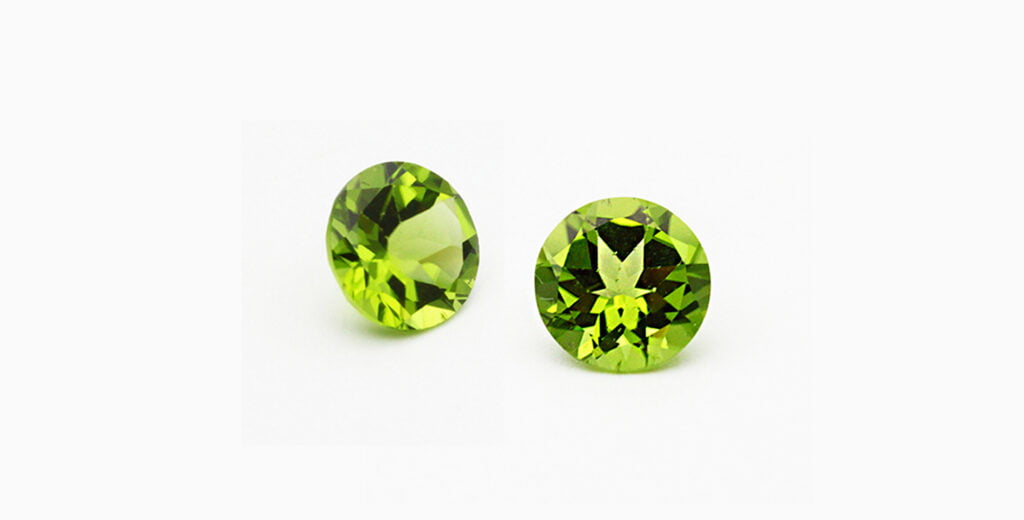Facts About Peridot: The August Birthstone
When it comes to green gemstones, the first stone that comes to our minds will most probably be emerald. Unsurprisingly, it is the most talked-about green gem that represents everything from history, attractiveness, to value. And away from the limelight, we have an entirely different gem, whose status is exceptionally inferior to the emerald, the ever olive-green peridot.

Peridot is the gem variety of forsterite that belongs to the mineral group of olivine. Olivine appeared to be one of the common rock-forming minerals, apart from feldspar and quartz being the top two, which normally found in basalt and peridotite. Basalt typically comes in the form of lava, and extrusive rock. Peridotite has a variety the industry is more familiar with, kimberlite, hosts for diamonds. It has a chemical composition of (MgFe)2SiO4 where its magnesium and iron are interchangeable between one another.

For most gemstones, their introduction as a new mineral has been pretty straightforward, but that is not the case for peridot. As confusing as it may be, until the 18th-century societies since 3000 years ago actually called the present-day peridot “topazios” which later became topaz. Initially, topazios was named after an island off the coast of Egypt, Topazios Island which is now known as St. John’s Island. The reason behind the name swap remains unclear. This island was an important source for the peridot of the ancient world. It supplied many of Queen Cleopatra’s green jewellery and archeologists argued that countless emerald jewellery of hers were thought to be peridot.
Chrysolite is another term that represented peridot too for a long time. Chrysolite appeared as the seventh precious stone mentioned in the Bible. Although it has been used for millenniums despite it not being a known mineral, the present trade and experts agreed to discontinue using this term. Chrysolite carries a broad definition that refers to yellow-green gemstones, but mainly peridot. Many of such coloured gemstones bearing the name include chrysoberyl, tourmaline, moldavite, even yellow sapphires.
Peridot can be identified among other same gemstones, by examing its physical properties. For starters, peridot has an average hardness of 6.5-7 but hard enough to withstand daily wears. Faceted peridots also show signs of its strong doubling under magnification, a feature rarely seen in other “chrysolites”. On the rough end, it belongs to the orthorhombic crystal system that usually has a rectangular prism shape. Furthermore, this gem is idiochromatic. As an idiochromatic gem, it obtains its colour from an element essential for its chemical structure instead of trace elements.
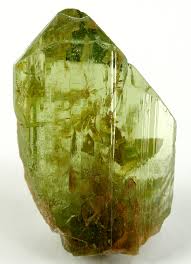
Peridots are likened to the idiochromatic gems, typically do not have a wide range of colours. It almost always displays yellowish-green, or many describe it as “olive green” in a considerably consistent manner, although some may slightly vary in intensity and saturation. It can also be brownish-green or rare pure green depending on the amount of iron in its structure. However, too much iron can cause the stone to be brownish.
Inclusions are a gem’s sort of identity, or birthmark for that matter. It could be a crystal within crystal or fissures caused by the geographic conditions. Nonetheless, they are a pleasant sight for gemologists. As for peridot, it often has disk-like fractures in the stone that are given name as “lily pads”. It closely resembles its name due to the leafy-green colour of the stone with the fracture-like patterns floating in mid-air. Another inclusion that often present is black chromite. Some of it can be well-formed in its octahedral crystal shape.
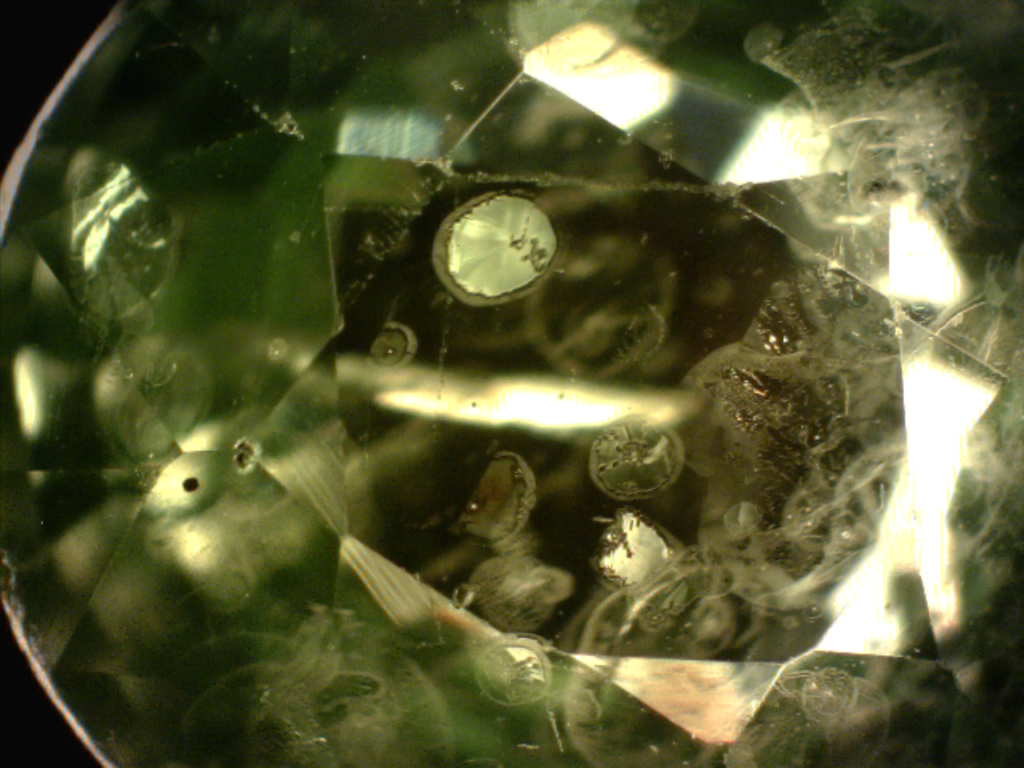
The formation of peridot begins deep beneath the earth. It is one of only two gemstones that formed in the mantle, the other being the diamond. The difference between the peridot and diamond is the depth of formation, with the former crystallised in the upper mantle (around 60km deep) and the latter forms under high heat high temperature (around 300km deep). Peridot crystallises under the extreme heat of the magma and is then brought up to the crust by volcanic activity. That is why olivine can be commonly found in basalt.
As we run down the facts of peridot, we stumbled upon plenty of peculiar stories and facts, why not another one? Interestingly, Peridots form in space. Extraterrestrial peridot in the form of a pallasite, landed in Argentina in the year 1951. Pallasite is a type of meteorite that consist of almost equal parts of iron-nickel metal and silicate minerals. However, it is not the first known pallasite found back in the 1800s. Although scientists believe diamonds also do form in space, peridot is the only gemstone found in meteorites. Pallasites are extremely rare, and they are usually sold as a pallasite slab piece.
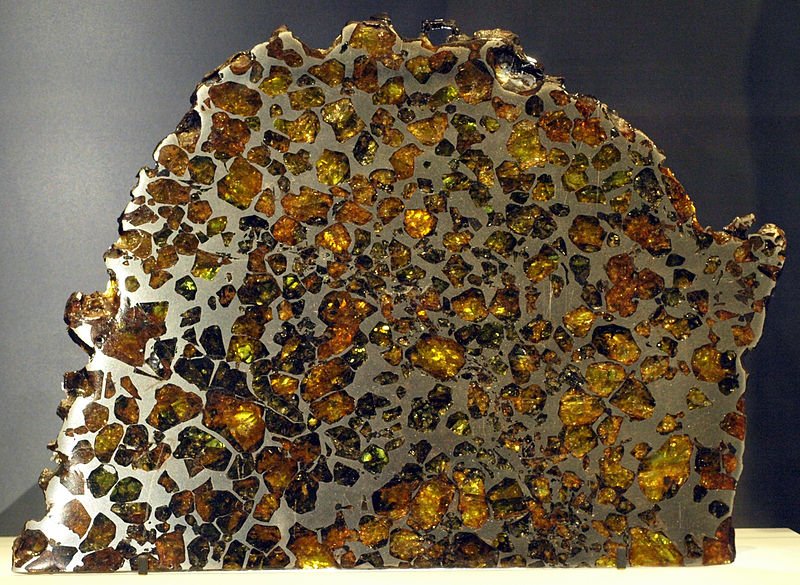
Although there are many favourable reasons to love peridots, they are somehow underappreciated, perhaps due to its narrow colour range. As mentioned earlier, peridot obtained its colour from an essential chemical and not a trace element. Because of that, it limits the colour at the yellowish-green range. It is one of few gemstones with only a single colour. On top of that, most jewellers and even customers prefer versatile and striking colours to go with their jewellery. Perhaps, peridot may not be an ideal gemstone. The low demand for peridot in the market leads to lesser supplies for Peridots. It resulted in lesser researches on this gemstone, and thus there are few findings and public knowledge.
To make up for its unpopularity, here are a few reasons why peridots are precious. Although olivine can be widely available, high-quality peridot can be rare. High-quality peridot refers to those that are very eye-clean, desirable colour, with considerably good carat. Other than that, due to low demand, less high-quality peridots are plentiful and readily assessable of various sizes for various cutting styles. As for now, there are only two majour sources for peridot, Myanmar and Pakistan, whereas other sources only produce small quantities.
When rarity comes into consideration, it is normal for it to be pricey. However, it is not the case for peridot. Peridot is relatively inexpensive. They can be set into many kinds of jewellery, casual or glamorous without breaking the bank. And when clarity and carat permits combine with excellent jewellery designs, it can fetch a decent price. Take auctioned items as an example: a set of peridot jewellery – necklace with diamonds, earrings, bracelet, and ring – was sold at almost USD 350k. That was four times the minimum estimated price. Another set – ring with diamond and earrings – was sold for one-half more than its minimum estimated price.
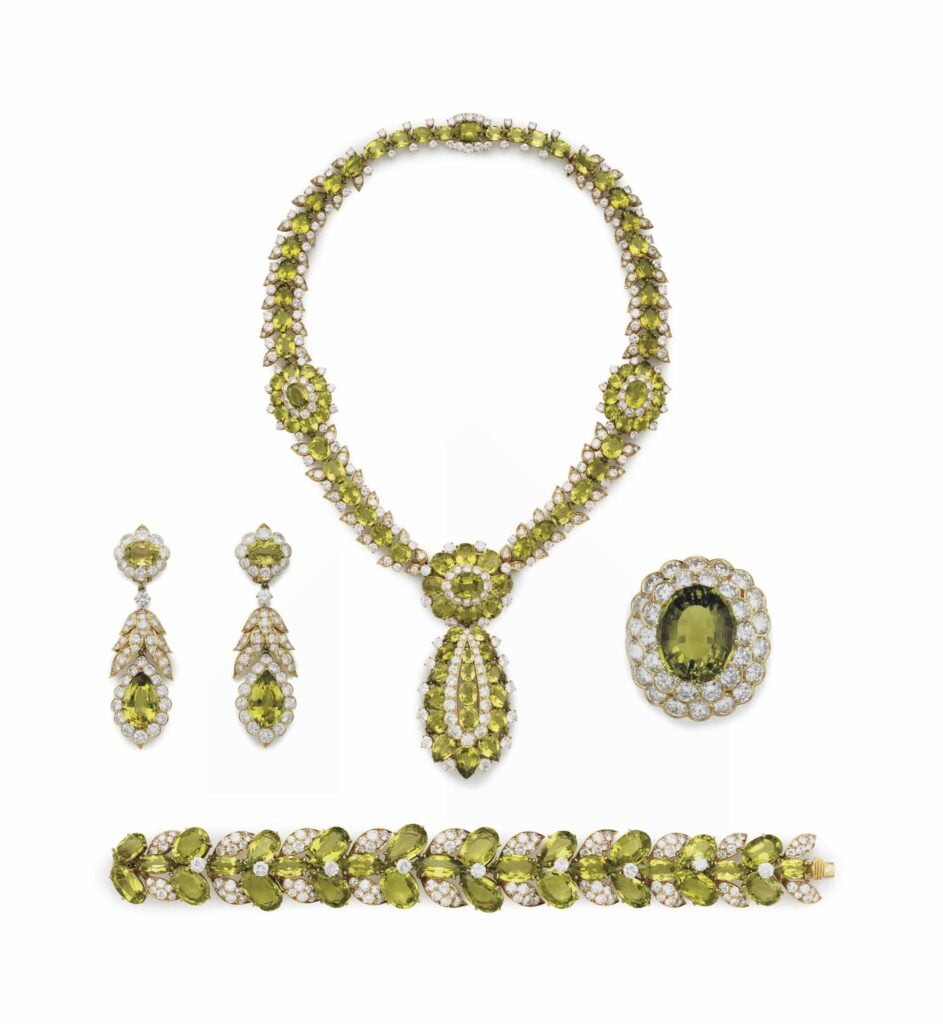
As a whole, peridots are as gorgeous as any other gemstones. It is truly a fascinating gemstone with many hidden stories waiting to be told.
View our Peridot collection here: https://www.lazada.sg/the-gem-museum-shop/?&from=wangpu&sc=KVUG&q=Peridot&spm=a2o42.10453684.carouselProductRecommend_397617746.0
Remember to subscribe to our monthly e-newsletter. For latest updates on The Gem Museum, follow us on Facebook or Instagram.

